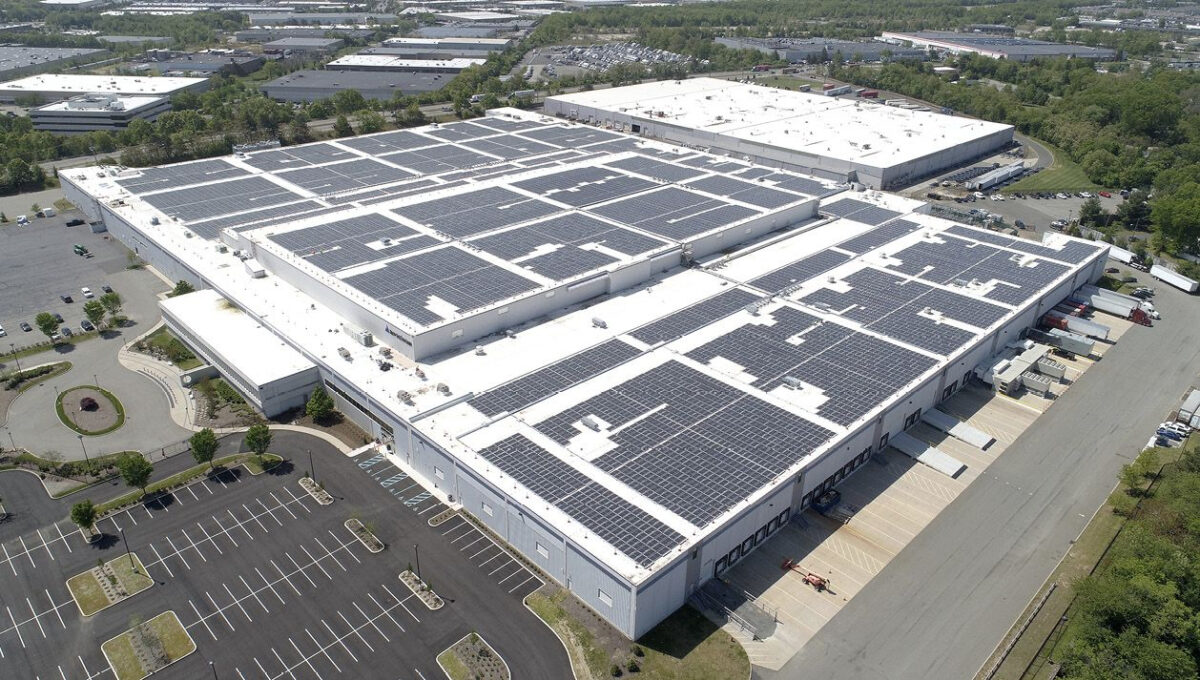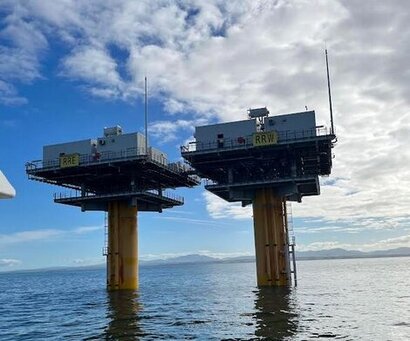The next industrial revolution
The past 20 years have seen remarkable shifts in technology, from smartphones to solar and the electrification of transport. Clean energy and technology consultant Gerard Reid argues that an even bigger shift is looming, with the combination of clean electricity and AI set to usher in an “era of electrification intelligence.”

The past 20 years have seen remarkable shifts in technology, from smartphones to solar and the electrification of transport. Clean energy and technology consultant Gerard Reid argues that an even bigger shift is looming, with the combination of clean electricity and AI set to usher in an “era of electrification intelligence.”
From pv magazine 2/25
Revolutions have often been driven by an energy source and transformative invention. The industrial revolution in the 19th century’s age of coal saw the steam engine catalyze huge demand for coal, creating vast wealth and transforming Britain, Europe, and the United States into global powers. The 20th century brought the age of oil. The internal combustion engine generated demand for crude oil, and revolutionized transport. Ford, Mercedes, Bosch, Toyota, and Chevron became household names, cementing the economic dominance of the United States, Germany, and Japan.
The era of electrification intelligence will be even more profound. It starts with electricity, the backbone of our modern digital world and an enabler of artificial intelligence. Digital devices require electricity. Today, that is largely produced by inefficient, polluting fossil fuels. Clean or nonfossil fueled alternatives – solar, wind, hydro, nuclear, and geothermal – are rapidly scaling. Hydro is limited by geography, with most prime locations already developed. Nuclear faces long construction times and cost overruns, particularly in Europe and North America. Wind is nearing maximum penetration in many areas due to public resistance and rising costs. Geothermal shows promise, but significant innovation is needed to move it beyond the limited regions, such as Iceland and California, with high-temperature resources near the surface.
Simple solar
Solar stands apart. Its simplicity, scalability, ease of installation, and cost-effectiveness make it the most transformative energy of our time. A 90% cost reduction over 10 years means solar is the cheapest form of power generation in most places. In 2024, at least 500 GW of new solar will have been installed, producing more electricity than new nuclear added over the last 30 years.
Power electronics innovation enables “plug-and-play” solar arrays anyone can install in minutes. Everyone is installing solar. In Pakistan, amid high electricity prices, an estimated 15 GW of unrecorded solar was installed in 2024 – enough to meet half of its electricity demand.
An energy storage revolution is addressing the problem of intermittent generation. My first electric car, the BMW i3, had a 175 km range. My Tesla Model Y offers 550 km and at a lower price, thanks to battery technology advances. The same batteries will not only power vehicles, but store excess solar energy, creating a resilient, decentralized energy system.
Impactful in their own right, clean energy becomes transformational alongside a technology set to skyrocket clean power demand: AI.
It enables machines to perform tasks unimaginably faster than humans and is developing at an exponential rate, rapidly approaching human intelligence.
OpenAI’s GPT-3 showed school-level math proficiency in 2021. Recent “o3-class” AI models demonstrate PhD-level proficiency. Chat GPT-4 can perform with the best humans in exams ranging from scholastic assessment tests to bar entry papers.
AI will inevitably surpass leading humans in most areas, offering the promise of more low emissions energy sources, including nuclear fusion and high-performing batteries, while slashing electricity costs.
Smarter than us
By 2030, artificial intelligence will be smarter than us. That has massive implications for society, geopolitics, and national security. The result will be a global race for super intelligence, and it’s going to require a whole lot of energy. Currently, data centers and AI account for around 2% of global electricity demand, with extremes in data center hubs such as Ireland reaching more than 20%.
Those levels are set to at least double by 2030, meaning that we need to build the power infrastructure equivalent to that of a country such as Germany in the coming years. That should not be an issue, except for the fact that in much of the United States – for example, in California and also in parts of Europe – grids are at full capacity. That is why cities such as Dublin and Amsterdam have imposed moratoria on new data centers. It is difficult to add conventional generation capacity, such as coal or gas plants, which is why many technology companies are trying to restart old nuclear power stations or re-purpose mothballed power infrastructure. To make matters worse, AI has to compete with transport and heating and cooling for that additional power.
To win the AI race, companies and countries will have to build infrastructure at breathtaking speed. To enable that to happen, regulators will have to allow AI and data center companies to build out their own electrical infrastructure. They will increasingly use solar, batteries, gas-fired generators, and modern transformer and control capabilities that can all be built on site or close to their infrastructure in a matter of months.
AI allows for real-time energy optimization and better management of power flows across an increasingly complex power system. AI models are already analyzing performance data, weather patterns, and building energy usage to predict energy generation and consumption. This already enables efficient energy use and reduces reliance on the grid during peak times. In addition, data center usage can be shifted dynamically from one location to another, depending on power supply in those regions, thereby helping to alleviate the problems of too much solar or wind power production at certain times of the day.
AI also has immense potential to enable our homes, businesses, and even electric vehicles (EVs) to more efficiently use electricity and to better integrate into the wider power system through virtual power plants (VPPs). These VPPs can dynamically manage power demand, integrate renewable energy, charge and discharge stored energy, and provide grid-support services while saving customers money.
China leads
The era of electrification intelligence is an enormous growth opportunity for innovators, entrepreneurs, and forward-thinking countries. As it stands, the leader in this revolution is China, which leads on the development, production, and deployment of all things clean energy, from solar panels to power electronics to EVs.
The United States leads when it comes to artificial intelligence due to the brilliance of companies such as Google, OpenAI, and Nvidia. However, recent announcements from China – such as those by DeepSeek, which trained an AI model comparable to all the leading players with an 11-time reduction in computing power, and thus energy usage and cost – show how close behind they are. The laggards are clearly Europe, Japan, and the rest of the world.
What is truly insane is that there is no real discussion taking place about the era of electrification intelligence, likely because the speed of change is simply too fast for the established world. Business leaders don’t know what is going on or don’t understand the speed of change, the global media is hesitant to address it, and many governments are clueless. The reality is that we are moving into a world where everything is possible and we need to grasp the opportunities in front of us.
The first step in doing this is to understand the direction of travel. The second is to develop a plan of action to prepare for the changes taking place. Regulators, governments, and business leaders are going to have to respond quickly. Risks will need to be taken.
I firmly believe we can navigate this revolution and make the world a better place, while addressing global challenges such as climate change, inequality, and geopolitical tensions. We are living through one of the most important times in history. Each of us has the ability – and I would argue, the duty – to influence the changes happening around us. If you do that, you’ll help make the world a better place.
 About the author: Gerard Reid is a co-founder and partner of Alexa Capital. He has spent more than 20 years focusing on investment banking, equity research, fund management, and corporate finance, with a focus on the energy transition and digitalization. He was previously managing director and head of European cleantech research at Jeffries & Co. To find out more about capital market opportunities in energy storage, see Alexa Capital’s “Investing in the Energy Storage Revolution” report.
About the author: Gerard Reid is a co-founder and partner of Alexa Capital. He has spent more than 20 years focusing on investment banking, equity research, fund management, and corporate finance, with a focus on the energy transition and digitalization. He was previously managing director and head of European cleantech research at Jeffries & Co. To find out more about capital market opportunities in energy storage, see Alexa Capital’s “Investing in the Energy Storage Revolution” report.
What's Your Reaction?





























































